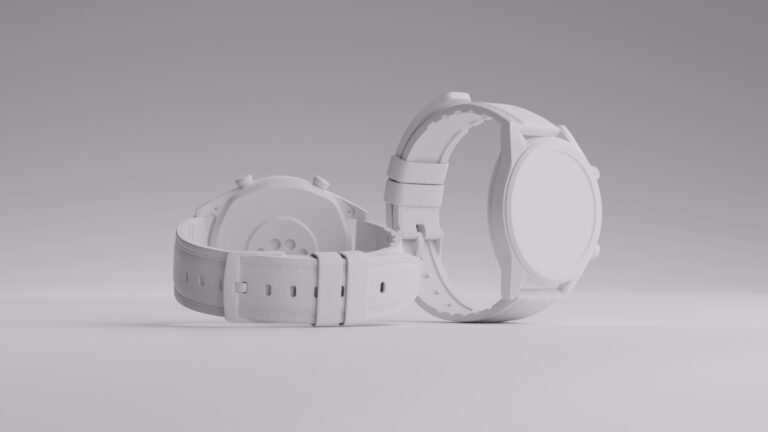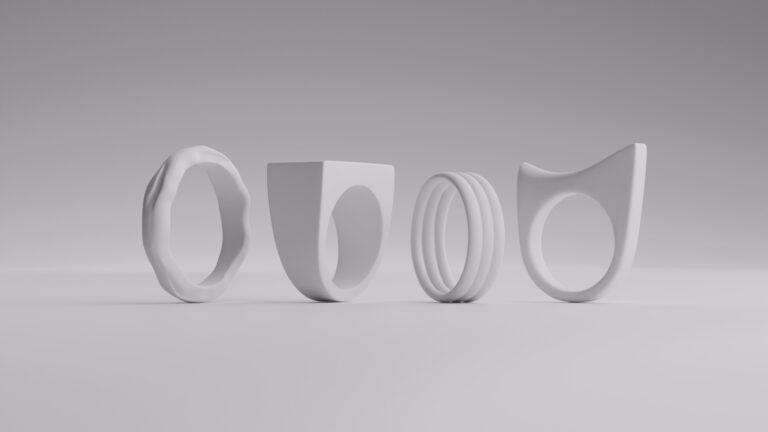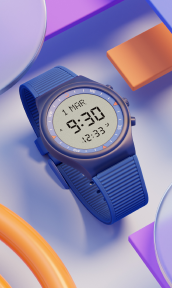In digital visualization, 3D rendering software transforms designs into realistic images and animations for various industries. The demand for advanced 3D rendering tools continues to grow in 2025 for higher quality and efficiency. So, without further ado, here are some top choices you can make!
The Role of 3D Rendering Software

3D rendering software is essential for creating lifelike visualizations that convert complex 3D models into detailed 2D images or animations. By simulating real-world physics, lighting, materials, and shadows, these tools can produce images and videos that are almost indistinguishable from real photographs and live-action footage. This capability has transformed various industries, enabling more immersive and accurate representations of designs, concepts, and environments. Here’s a deeper dive into the role of 3D rendering software across different sectors:
Architecture and Interior Design
In architecture and interior design, 3D rendering software allows designers to create highly detailed visualizations of buildings, interiors, and landscapes. This is crucial for several reasons:
- Client Presentations: Clients can realistically visualize the final product, making it easier to understand the design intent and, thus, make informed decisions.
- Design Iteration: Designers can experiment with different materials, lighting, and layouts to refine their designs before construction begins, saving time and resources.
- Marketing and Sales: Realistic renderings can be used in marketing materials to attract potential buyers or investors by showcasing the aesthetic and functional aspects of a project.
Film and Animation
In the film and animation industry, 3D renders are used to create stunning visual effects (VFX) and animated sequences. This includes everything from CGI characters and environments to complex simulations like explosions, water, and hair dynamics. Key roles include:
- Visual Effects: Seamlessly integrating CGI with live-action footage to create scenes that would be impossible or impractical to shoot in real life.
- Character Animation: Bringing digital characters to life with realistic movements, expressions, and interactions.
- Environment Creation: Crafting detailed and immersive worlds, whether they are entirely fictional or based on real locations.
Video Games
For video game development, a 3D software is critical in creating immersive and visually appealing game worlds. This includes:
- Real-Time Rendering: Rendering graphics in real-time to ensure smooth gameplay and immediate feedback for players.
- Character and Environment Design: Developing detailed characters, environments, and props that enhance the storytelling and user experience.
- Lighting and Effects: Implementing realistic lighting, shadows, and special effects to create a specific mood and engaging game scenes.
Product Design and Prototyping

In product design and manufacturing, 3D rendering software is used to create realistic prototypes and visualizations of products before they are physically manufactured. This offers several benefits:
- Prototyping: Visualizing and iterating product designs quickly without the need for physical prototypes, reducing development time and costs.
- Marketing: Creating high-quality images and animations of products for marketing campaigns, allowing potential customers to see the product in detail before it is available.
- Customization: Enabling designers to showcase different versions and customizations of a product, helping clients and customers make more informed choices.
Medical and Scientific Visualization
3D rendering software also plays a crucial role in medical and scientific visualization. It helps in:
- Medical Imaging: Creating detailed and accurate 3D models of anatomical structures, which can be used for educational purposes, surgical planning, and patient consultations.
- Scientific Research: Visualizing complex data sets and simulations, such as molecular structures, astrophysical phenomena, and environmental models, to aid in research and understanding.
Advertising and Marketing
In advertising and marketing, 3D renders are used to create visually appealing and persuasive content. This includes:
- Product Visualization: Showcasing products in the best possible light, with detailed textures, reflections, and environments that highlight their features.
- Animated Commercials: Producing engaging and dynamic commercials that can explain a product or service in an entertaining and informative way.
- Interactive Content: Developing interactive 3D models and virtual experiences that allow potential customers to engage with products uniquely and memorably.
3D rendering software’s ability to create realistic and detailed visualizations has become indispensable across numerous fields. As technology continues to evolve, these tools will become even more powerful and integral to the creative and technical processes that shape our visual world.
Pick your 3D Rendering Software

Although there are several rendering software already on the market, in 2025 the need for them has grown even more. Regardless of the industry they are used for, the results are amazing, cost-efficient as well as time efficient. So, here are some of the best 3D rendering software you can use in 2025.
Blender
Blender is a powerful, open-source 3D rendering software that has become immensely popular due to its versatility and cost-effectiveness. With a comprehensive suite of tools for modeling, texturing, animating, and rendering, Blender is used by artists, hobbyists, and professionals alike.
Key Features:
- Cycles and Eevee Render Engines: Cycles is a physically-based path-tracing engine that delivers photorealistic results, while Eevee is a real-time engine that offers fast, high-quality previews and final renders.
- Extensive Add-ons and Plugins: Blender supports a wide range of community-created extensions, enhancing its functionality and allowing for customization based on specific project needs.
- Grease Pencil: A unique tool for creating 2D animations within a 3D environment, blending traditional and digital art forms.
- Open Source: Being free and open-source, Blender benefits from a large and active community that continuously contributes to its development and support.
Ideal For:
- Independent artists, small studios, and educational institutions that need a cost-effective yet robust rendering solution.
- Users who appreciate an active community and frequent updates to the software.
Autodesk Arnold
Arnold is a high-end ray-tracing 3D rendering software developed by Autodesk. It is renowned for its ability to produce high-quality, photorealistic images and is widely used in the film and animation industry for creating visual effects.
Key Features:
- Physically-Based Rendering: Produces realistic images by accurately simulating light behavior, materials, and shadows.
- Scalability: Efficiently handles large datasets and complex scenes, making it suitable for high-end production work.
- Seamless Integration: Works seamlessly with other Autodesk products like Maya and 3ds Max, as well as various third-party applications.
- Advanced Shading and Lighting: Includes a range of shaders and lighting options that provide detailed control over the final render.
Ideal For:
- Large studios and professionals in the film, VFX, and animation industries that require top-tier rendering capabilities.
- Projects that demand high realism and extensive control over lighting and materials.
V-Ray
V-Ray by Chaos Group is one of the most versatile and widely used rendering engines, known for its ability to balance quality and speed. It integrates seamlessly with many popular 3D modeling software such as 3ds Max, Maya, SketchUp, Rhino, and more.
Key Features:
- Hybrid Rendering: Combines the power of CPU and GPU rendering to optimize performance and accelerate rendering times.
- Photorealistic Output: Delivers high-quality visuals with realistic lighting, textures, and materials.
- Denoising Capabilities: Includes advanced denoising tools that clean up noise in the render, resulting in smooth and clear images.
- V-Ray Cloud: Offers cloud rendering services, allowing users to render projects using Chaos Group’s powerful servers.
Ideal For:
- Professionals in architecture, interior design, and any field that requires high-quality visualizations.
- Users that need a reliable and fast rendering engine that can handle a variety of projects and integrate with their existing workflows.
Cinema 4D
Overview: Cinema 4D, developed by Maxon, is highly regarded for its user-friendly interface and powerful capabilities. It is widely used in motion graphics, VFX, and architectural visualization, offering a robust set of tools for 3D modeling, animation, and rendering.
Key Features:
- Intuitive Interface: Designed to be easy to learn and use, making it accessible to beginners while still being powerful enough for professionals.
- Advanced Motion Graphics Tools: Includes tools like MoGraph, which is ideal for creating complex animations and effects.
- Integration and Compatibility: Works well with other software like Adobe After Effects, allowing for a streamlined workflow in motion graphics and compositing.
- Fast Rendering: Offers efficient rendering solutions that balance speed and quality, suitable for both real-time previews and final outputs.
Ideal For:
- Motion graphics artists, VFX professionals, and designers who need a versatile and intuitive 3D rendering solution.
- Users looking for seamless integration with other design and animation tools.
Lumion
Lumion is a 3D rendering software tailored specifically for architects and designers. Known for its real-time rendering capabilities, Lumion allows users to create stunning visualizations quickly and efficiently.
Key Features:
- Real-Time Rendering: Provides instant feedback and allows for on-the-fly adjustments, significantly speeding up the design process.
- Extensive Content Library: Comes with a vast library of materials, objects, lighting, and effects to enhance visualizations.
- User-Friendly: Minimal learning curve, making it accessible to users with various levels of experience.
- 360 Panoramas and VR Support: Allows users to create immersive experiences with 360-degree panoramas and virtual reality integration.
Ideal For:
- Architects, interior designers, and landscape designers who require quick and high-quality renderings for client presentations and project development.
- Users who value real-time feedback and a user-friendly interface.
These are just a few of the 3D rendering software you can try and learn. So, regardless which software you decide to work with, just make sure it’s the right one for your industry, your needs and your knowledge. There are several software perfect for beginners and professionals alike, so choose freely.
D5 Render
D5 Render is a real-time rendering software designed for professionals who value both speed and visual impact. It’s the first rendering software to feature built-in AI tools—empowering users to create high-quality, photorealistic results faster than ever. With an intuitive interface and robust performance, D5 is trusted by industry leaders like BIG and KPF for delivering compelling visual stories at any stage of design.
Key Features:
- AI-Powered Tools: The first renderer with native AI features like AI Sky, AI Weather, and smart material match to speed up creative decisions.
- Real-Time Path Tracing: Achieve cinematic-level realism without long render times.
- Live Sync Integration: Connects seamlessly with Revit, SketchUp, Rhino, Archicad, and more.
- Cloud Collaboration: Manage assets and co-edit projects from anywhere.
- Vast Asset Library: Includes thousands of models, materials, and effects built for AEC workflows.
- Fast Onboarding: Most users get up to speed within an hour—no steep learning curve.
Ideal For:
Architects, interior designers, and 3D artists who want a fast, intelligent, and collaborative rendering solution that fits into real-world design timelines.
Wrapping up
The best 3D rendering software in 2025 caters to several needs, from independent artists and small studios to large professional teams in film, architecture, and product design. Blender’s open-source model makes it an accessible and versatile option for many users. Autodesk Arnold stands out for high-end, photorealistic rendering in the film and VFX industries. V-Ray offers a balance of quality and speed, making it ideal for various professional applications. Cinema 4D provides an intuitive and powerful toolset for motion graphics and VFX, while Lumion excels in real-time rendering for architectural visualization.
Selecting the right 3D rendering software depends on your specific project requirements, budget, and the level of detail needed. As technology continues to evolve, these tools will keep pushing the boundaries of what’s possible, making the future of digital visualization more exciting and innovative than ever.
FAQ
What factors should I consider when choosing 3D rendering software?
When selecting 3D rendering software, consider factors such as your specific project needs (e.g., architecture, VFX, product design), your budget, the software’s ease of use, compatibility with your existing tools, and the quality and speed of the rendering engine. It’s also important to look at the level of community support and the frequency of updates.
Is Blender suitable for professional use despite being free?
Yes, Blender is widely used by professionals in various fields, including animation, VFX, game development, and architecture. Its comprehensive feature set, regular updates, and strong community support make it a viable option for professional-grade projects, despite being free and open-source.
How does real-time rendering differ from traditional rendering?
Real-time rendering generates images at a speed fast enough to allow for interactive feedback, which is crucial for applications like video games and virtual reality. Traditional rendering, on the other hand, focuses on producing high-quality, photorealistic images but typically requires more processing time. Tools like Lumion and Eevee in Blender offer real-time rendering capabilities.
Can I use multiple rendering engines for a single project?
Yes, it is possible to use multiple rendering engines for different aspects of a single project. For instance, you might use a real-time engine like Eevee for initial previews and fast iterations, and a more detailed engine like Cycles or V-Ray for final, high-quality renders. Many software packages support this kind of workflow integration.
What are the benefits of cloud rendering services?
Cloud rendering services provide access to powerful remote servers, allowing you to render complex scenes faster without the need for expensive hardware. This is particularly beneficial for handling large projects or when working under tight deadlines. Services like V-Ray Cloud enable users to scale their rendering capabilities efficiently and cost-effectively.


























